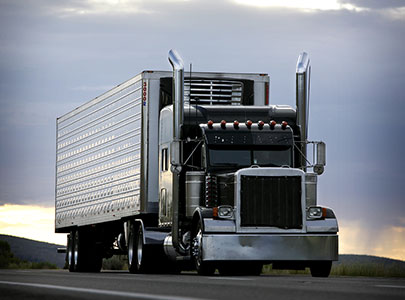
The transportation of food products is a complicated process that requires careful planning and good organization. There are specific regulations in Australia that specify how perishable foods should be transported from one place to another. As a general rule: all perishable foods should be transported in frozen or semi-frozen condition. The main purpose of transporting foods in such condition is to keep them healthy and fresh until they reach their final destination. The refrigeration process eliminates the heat and creates ideal temperature conditions in the transportation vehicles for keeping the food in good and healthy condition. Most transportation companies, not only in Australia but all over the world, use special vehicles with refrigerated trailers when transporting various perishable food products.
The refrigerated trailers that are used for transportation of foods need to be insulated well. Good insulation is very important for keeping the food in good condition. The quality of the insulation can actually be measured by the U-factor. This is a coefficient that shows how resistant is a typical refrigerated trailer to heat. The more lower the U-factor, the higher the insulation of the refrigerated trailer. Most commonly, manufacturers use plastic foams when they design the refrigerated trailers. The plastic foam is known as a material that has low U-factor. Furthermore, it is waterproof, lightweight and non corrosive. Manufacturers of refrigerated trailers also use steel or aluminum for better insulation. The aluminum successfully reflects the sun rays which have negative impact on the food products. However, for successful reflecting results, the body of the refrigerated trailers needs to be kept clean all the time.
In the past, specific methods for refrigerating were used. For keeping the food products in good condition in the transportation trailers, special substances have been used, such as ice, mixture of ice and salt, dry ice, mechanical refrigeration, and other cooling methods. Today, the modern refrigerated trailers are designed and equipped with state of art cryogenic systems and advanced air circulation systems. The cryogenic systems use special cryogenic refrigerants such as solid or liquid carbon dioxide and nitrogen in liquid form. These refrigerants are generally used for refrigerated trailers that transport food products over long distances. The main advantages of the cryogenic systems is that they are composed of several parts which don’t require special maintenance and cleaning procedures. Also, they can quickly reach the desired temperature once the food is placed inside the refrigerated trailer.
The air circulation systems are also very important for keeping the food products in good condition during the transportation process. Proper air circulation is essential for removing the heat from the refrigerated trailers which can penetrate through the walls, ceiling, or through the floor. The air inside the trailer needs to circulate, so that the products can remain fresh and healthy. Air circulation is also important for keeping a standard or constant temperature during the entire transportation process. The air circulation systems in the refrigerated trailers can be either top-air systems or bottom-air systems. Both air circulation systems offer the same benefits, and the main difference between them is in the airflow.
























